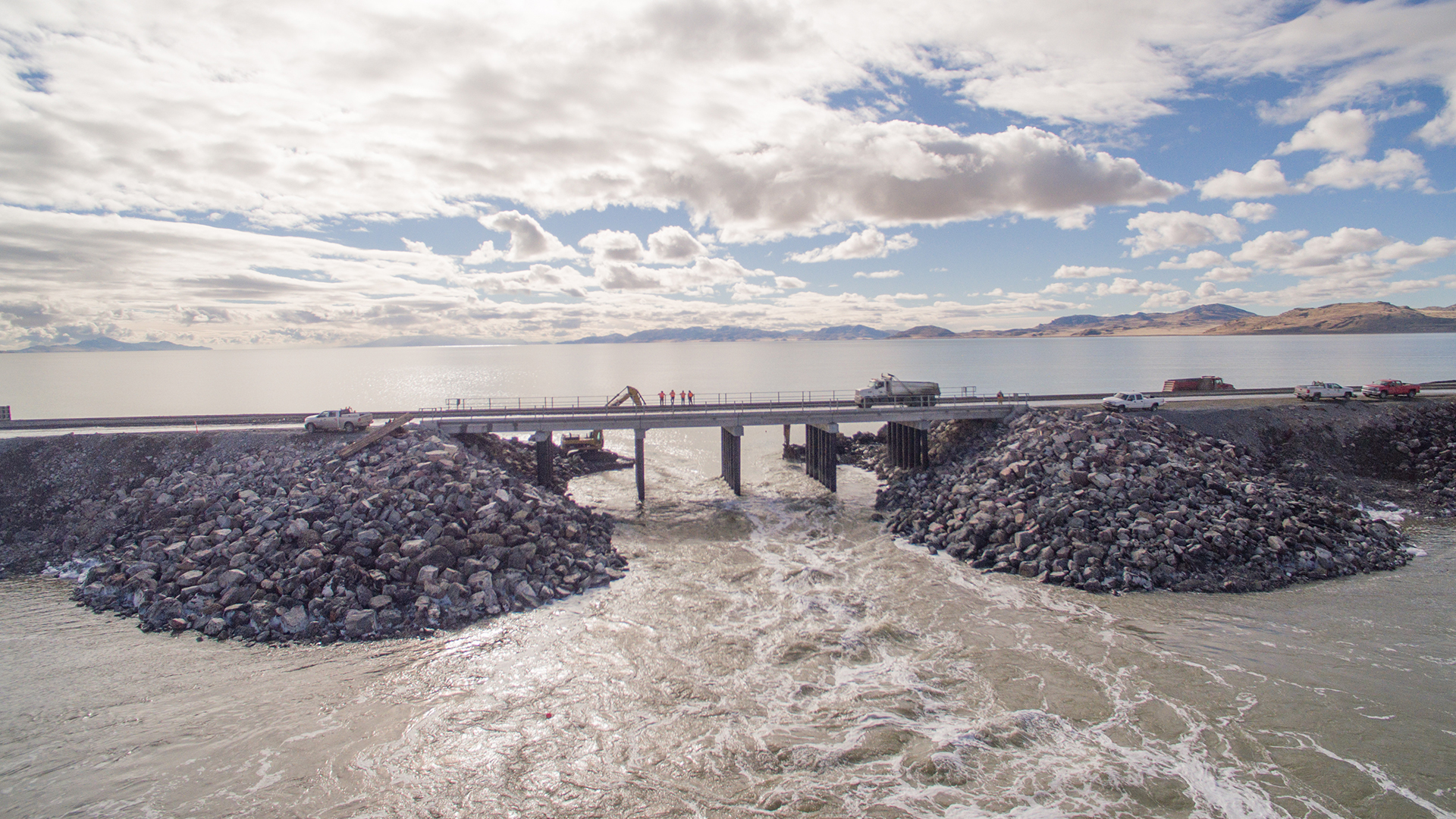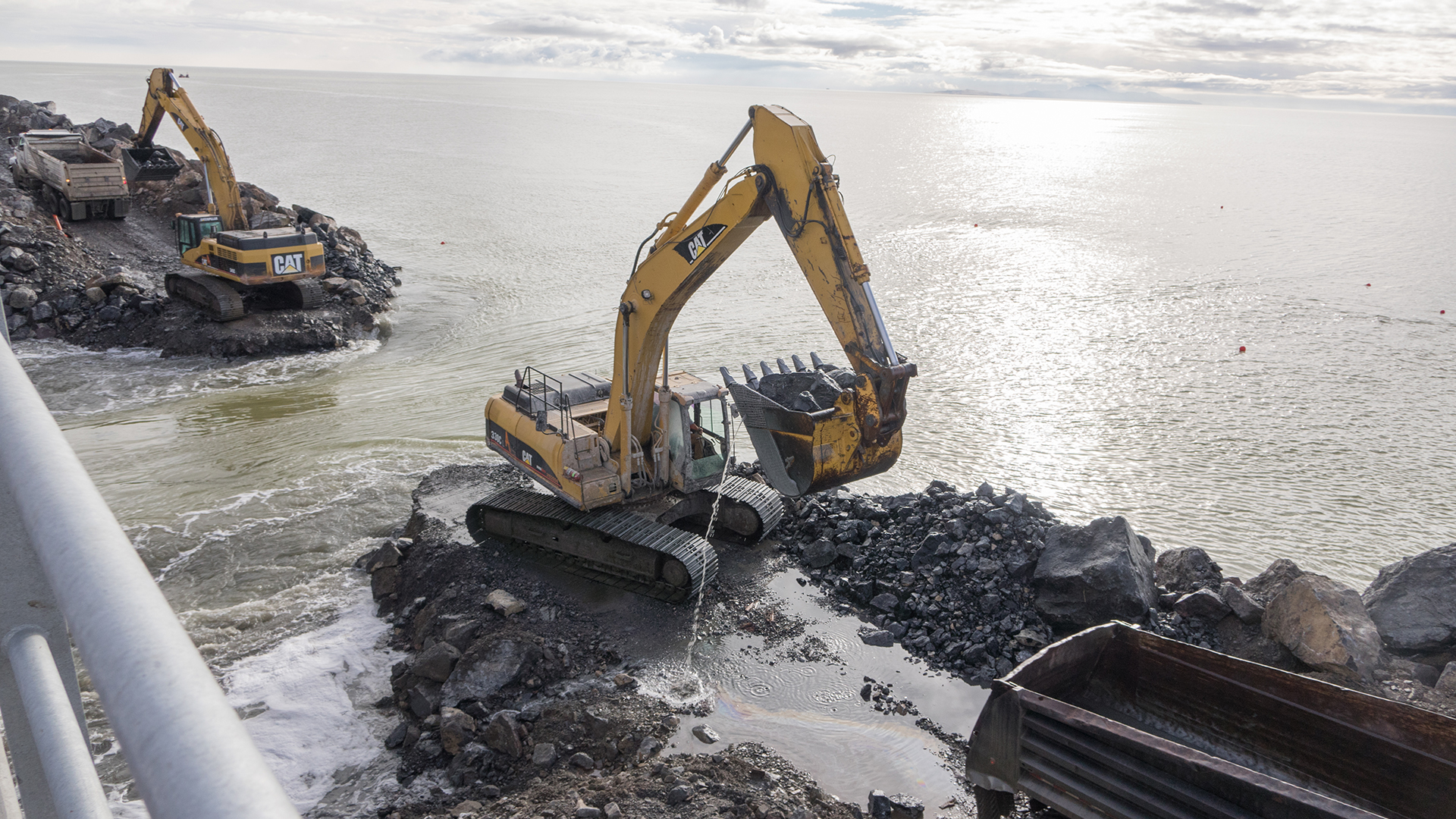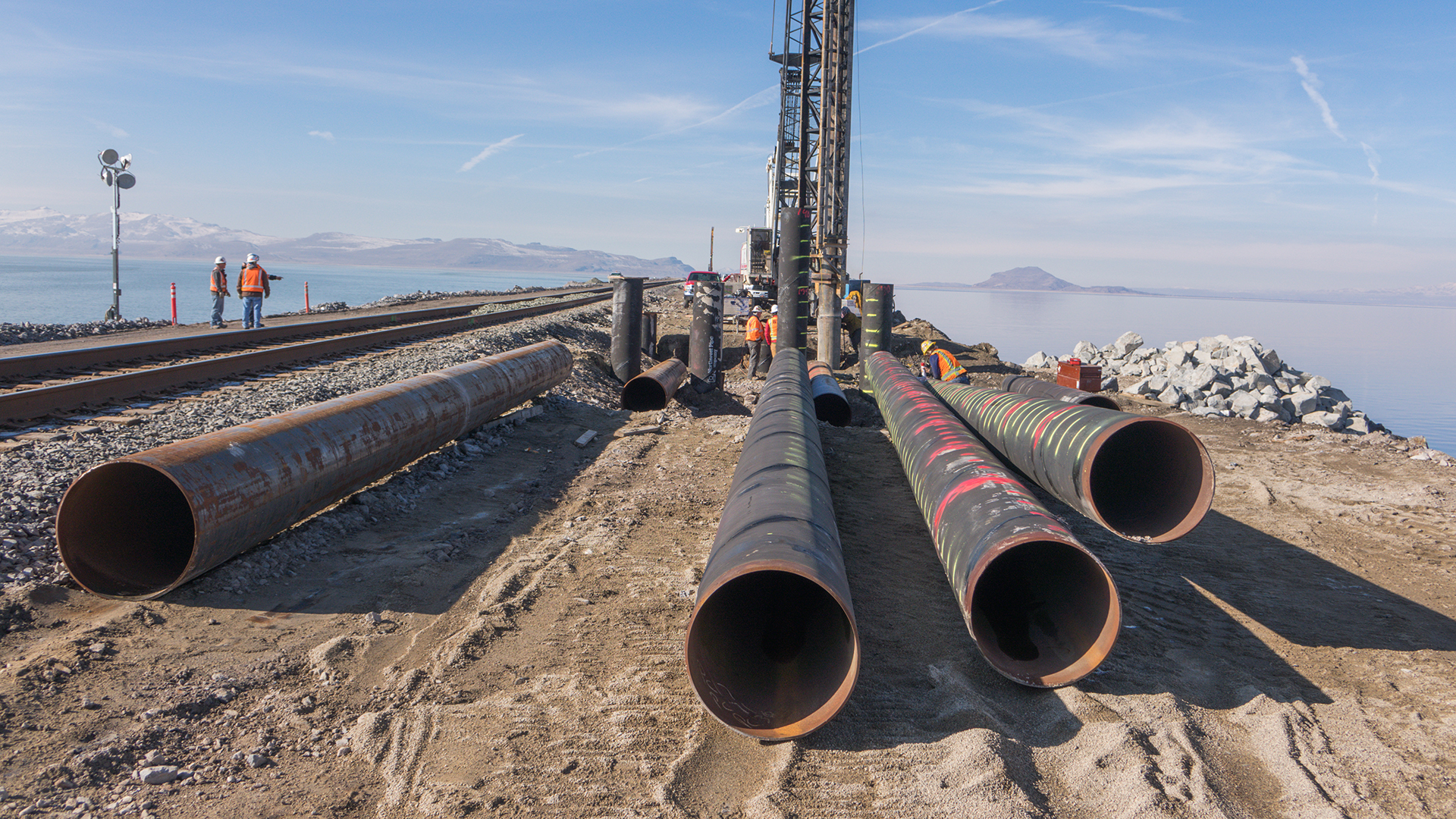Rail
Lakeside Sub Bridge Project
Lakeside Sub Bridge Project
Cutting through the largest saltwater lake in the Western Hemisphere—the Great Salt Lake—the 20-mile rock-filled causeway just got a facelift. RSA Construction Group crews built a new 180-foot-long, six-span precast box girder bridge that would reestablish the bi-directional water flow between the two arms of the lake.
When originally constructed in 1959, two culverts were built through the causeway to allow bi-directional water flow and boat traffic between the North and South arms of the lake. However, by 2011, the causeway had sunk more than 15 feet, rendering the culverts ineffective.
The new bridge was constructed in two phases. Phase 1 built half of the bridge and shifted the existing railroad tracks to a temporary shoofly. Phase 2 built the second half of the bridge and then shifted tracks to their final position. Large armoring stone control berms were constructed on the north side of the bridge to control flows through the Bridgeway, and channels had to be excavated underwater on both sides of the bridge.
While drilling steel casings into the causeway, crews encountered large amounts of metal and wood along the north side from railcars that had been buried during a major flood event in the 1980s to prevent the causeway from washing away. RSA crews drilled through the railcars to finish the pile driving operations, followed by excavation under the bridge to demolish and remove the boxcars.
The final breach of the causeway occurred in early December 2016 to reunite the two sides of the lake.


